
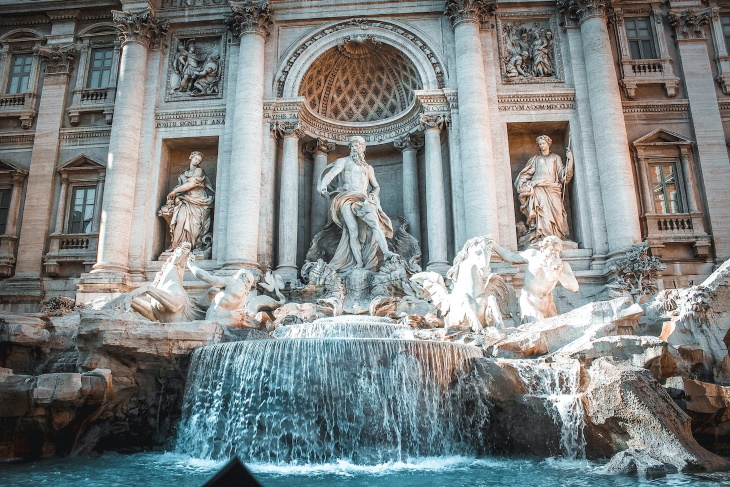
Location: Piazza di Trevi in the Quirinale district of Rome, Italy
Construction: 1732-1762
Architect: Nicolo Salvi
As unbelievable as it may sound, historians know there was a fountain at this very location more than two thousand years ago. The name “Trevi” originated from the fountain’s location at the junction of three prominent Roman streets, as in Latin, an intersection of three roads is known as a trivium.
Today, those roads are called Delle Muratte Street, Poli Street, and Crocicchi Street, but they had other names in the past. During the Middle Ages, the fountain was briefly abandoned, and only a tiny stream is said to have flown from it.
However, during the Renaissance and onwards, the popes of Rome conjured up a plan to restore and expand the fountain. This was despite the fact that there was already a building standing at the Trevi intersection. This building was Palazzo Poli, a 17th-century residence of the Duke of Poli. Parts of the building were demolished to make space for a big fountain. That’s why the Trevi Fountain leans against the remaining building, which is now an office.
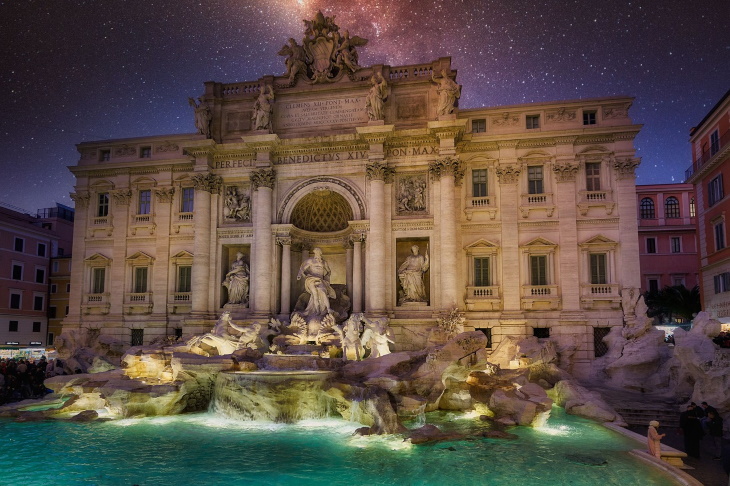
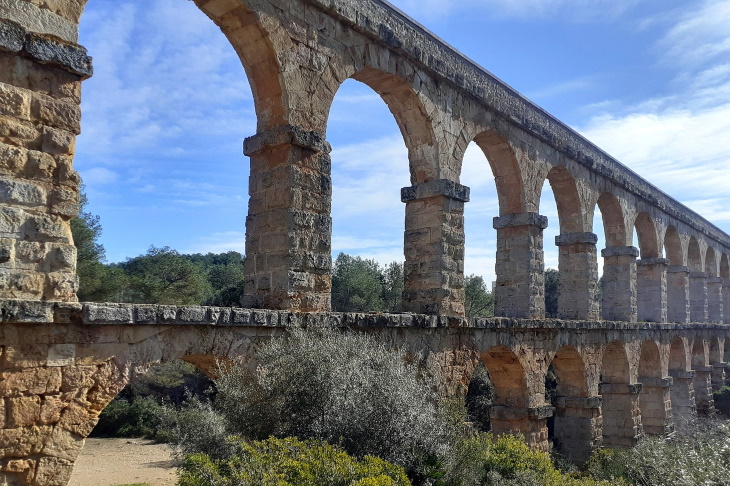
This aqueduct was commissioned in 19 BC by the famous Roman statesman and emperor Augustus’ son-in-law Marcus Vipsanius Agrippa. At the time, it was one of eleven aqueducts that provided Rome’s citizens with access to drinking water. Today, Acqua Vergine remains the only functioning ancient aqueduct in Rome.
A brief interlude about Roman aqueducts:
Roman engineers are renowned for creating arched aqueducts. These amazing structures were devised in such a way that water flowed in a steady and manageable stream using gravity. The longest Roman aqueduct was the Aqueduct of Valens which supplied Constantinople; it was 426 km (264 miles) long!
The massive water system of Rome was serviced by hundreds of workers who cleaned lime buildup and debris from aqueducts and lead pipes. It’s amazing to think that many of those ancient aqueducts still stand and work today - over 2,000 years after their construction!
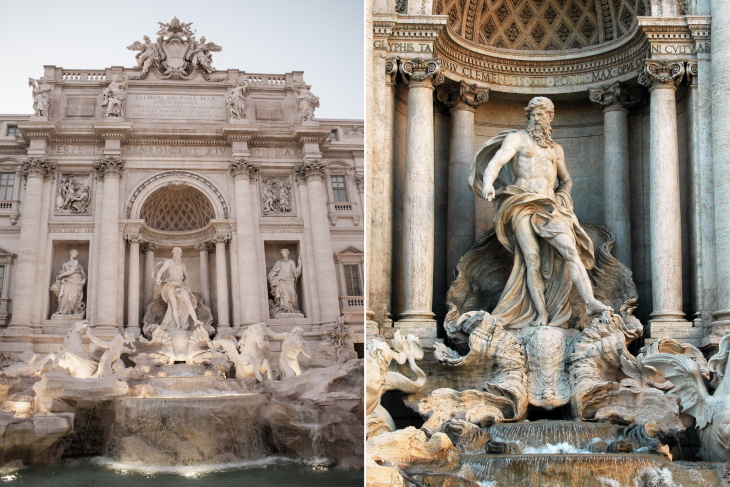

However, Oceanus doesn’t appear alone. In a niche to his left, we see a smiling goddess of Abundance with a basket of fruit. To his right is Salus, the goddess of safety, health, and welfare with a snake coiled around an amphora.
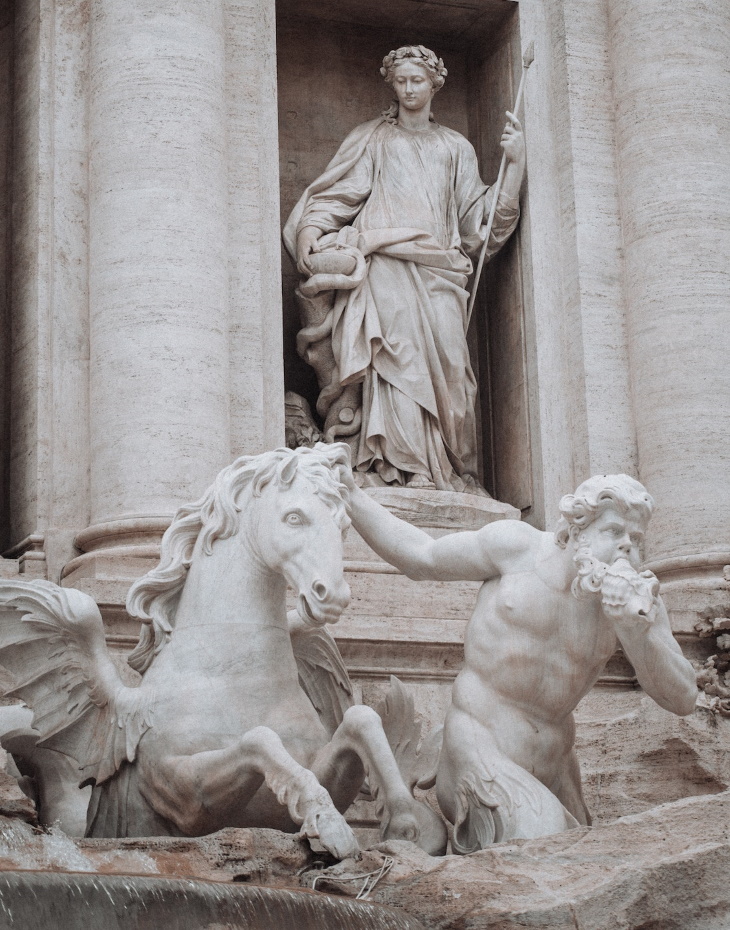
The top of the fountain is dedicated to his own history. Written above the statues are the names of the popes who commissioned the fountain surrounded by reliefs of angels and the Papal Coat of Arms. There are also two images illustrating the history of Roman aqueducts.
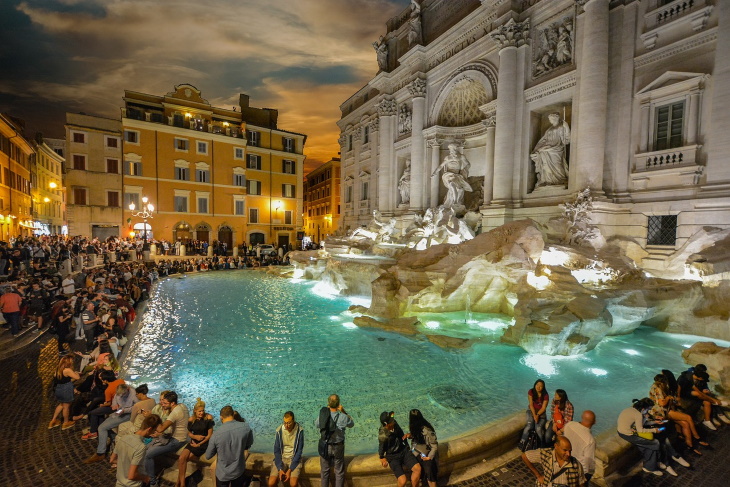
The fortune at the bottom of the fountain is also likely the reason why swimming in the Trevi Fountain is prohibited.
But why do people throw coins into the fountain in the first place?
The tradition most likely began after the release of the 1954 movie Three Coins in the Fountain. According to the lore of the film, if you throw one coin into the Trevi Fountain, you will return to Rome. Those who throw two coins will fall in love with someone they meet at the fountain. Those willing to part with three coins will marry the person they met. We can’t vouch for the accuracy of that myth, but there’s certainly no harm in trying. After all, the coins are all donated to a worthy cause!
Bonus! A live webcam of the Trevi Fountain